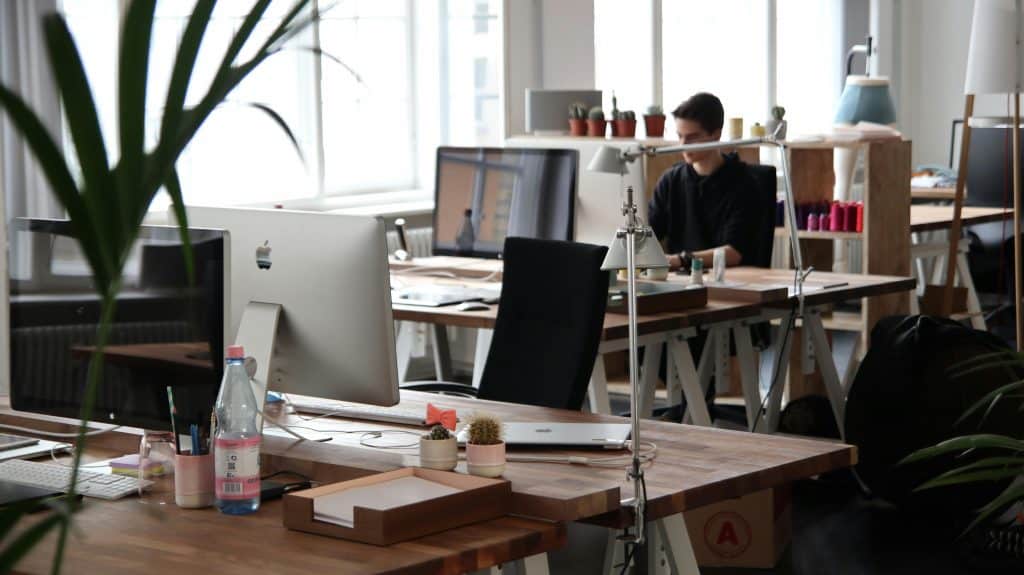The modern workspace has become more than a desk and a chair. Whether it’s a cluttered kitchen table or a high-end coworking space, your environment is constantly shaping your cognitive performance. As remote and hybrid work become the norm, a critical question emerges: how much does where we work affect how well we think? Recent research in environmental psychology, cognitive neuroscience, and productivity science reveals a growing truth—your workspace affects mental agility far more than we used to believe.

The Cognitive Cost of Poor Workspace Design
Cognitive agility—the ability to switch tasks fluidly, solve problems creatively, and maintain sustained focus—is highly sensitive to environmental input. When your workspace is filled with visual clutter, poor lighting, or background noise, your brain spends extra energy filtering distractions. This impairs executive function, the very mental “control panel” responsible for focus and flexible thinking.
According to research published in the Journal of Neuroscience, clutter competes for your attention the same way a pop-up ad does. When your environment has too many irrelevant stimuli, your brain has to work harder to tune them out, reducing available cognitive bandwidth.
Key Workspace Factors That Affect Mental Agility
1. Lighting Conditions
Natural light has been consistently linked to improved mood and cognitive performance. In one study by the Journal of Clinical Sleep Medicine, workers exposed to natural light during the day reported better sleep and scored higher on cognitive tests compared to those in windowless offices.
Artificial lighting—especially cool-white LEDs—can disrupt circadian rhythms and affect memory retention. For tasks that require sharp mental performance, consider how your lighting influences alertness.
2. Sound and Acoustics
A persistent, low-level background noise (like the hum of an HVAC system or nearby traffic) can affect working memory. More disruptive are intermittent sounds, such as notifications, talking, or sudden loud noises. Studies show that even moderate levels of conversational noise can reduce performance on tasks that require focus by as much as 66%.
Noise-canceling headphones or soundproofing materials can dramatically improve how your workspace supports mental agility.
3. Spatial Layout and Movement
Being sedentary for long periods is known to decrease mental alertness. Environments that encourage movement—such as standing desks, walking paths, or break areas—boost oxygen flow and help regulate glucose levels in the brain, improving both mood and executive functioning.
4. Color Psychology and Mental Focus
Color isn’t just aesthetic; it plays a direct role in cognition. Cool colors like blue and green have been associated with calmness and improved focus, while warm tones like red can either energize or overstimulate, depending on context. According to a study published in Science, red enhances attention to detail, while blue improves creative problem-solving.
The Remote Work Paradox: Freedom Without Design
Remote work offers autonomy but introduces inconsistency. Working from your bed or a noisy café might be flexible, but it also reduces the structure that helps cue your brain into “focus mode.” Behavioral scientist Dr. Susan Weinschenk notes that we unconsciously associate certain environments with specific mental states. Mixing leisure and work environments confuses those cues, reducing task performance.
A well-designed home workspace—one with visual separation, dedicated lighting, and predictable cues—can serve as a mental switch that tells your brain: It’s time to think clearly.
Biophilic Design: Nature Boosts Brain Function
One of the most consistent findings in environmental psychology is the benefit of nature on cognition. Even brief exposure to greenery—real or artificial—has been shown to improve memory, attention, and stress recovery. According to the Journal of Environmental Psychology, individuals who had plants in their workspace were 15% more productive than those without.
You don’t need a garden office to benefit. Even a small plant or a scenic image can improve cognitive functioning by reducing mental fatigue.
The Rise of “Neuroarchitecture” and Human-Centered Design
Workspaces are increasingly being designed based on how the brain works—not just how offices look. Known as neuroarchitecture, this movement integrates neuroscience with architectural design to support optimal mental functioning. Open floor plans, for example, once considered innovative, are now being reconsidered as studies show they impair focus and increase stress.
Instead, the new frontier is hybrid layouts: offering both collaborative zones and quiet “cognitive sanctuaries” for deep work.
Practical Ways to Make Your Workspace More Brain-Friendly
Here are simple, research-backed tips to improve your workspace and enhance mental agility:
- Designate a zone just for focused work—even in small apartments.
- Add natural light or use full-spectrum bulbs that mimic daylight.
- Incorporate nature through plants, water elements, or nature images.
- Use noise management tools like white noise machines or noise-canceling headphones.
- Alternate between sitting and standing, or take scheduled walks.
- Reduce clutter with a weekly reset or minimalist workspace layout.
- Use color cues to designate purpose (e.g., calming blue for focused work).
Conclusion
Mental agility isn’t just a result of motivation or discipline—it’s also a product of design. As more people work from home or in hybrid settings, understanding how your physical environment shapes your mental flexibility, focus, and creativity becomes essential. The evidence is clear: when your workspace supports your brain, your brain supports better thinking.
References
- McMains, S. A., & Kastner, S. (2011). Interactions of top-down and bottom-up mechanisms in human visual cortex. Journal of Neuroscience, 31(2), 587–597. https://doi.org/10.1523/JNEUROSCI.0492-11.2011
- Boubekri, M., Cheung, I. N., Reid, K. J., Wang, C. H., & Zee, P. C. (2014). Impact of windows and daylight exposure on overall health and sleep quality of office workers. Journal of Clinical Sleep Medicine, 10(6), 603–611. https://pubmed.ncbi.nlm.nih.gov/25024672/
- Oppezzo, M., & Schwartz, D. L. (2014). Give your ideas some legs: The positive effect of walking on creative thinking. Journal of Experimental Psychology: Learning, Memory, and Cognition, 40(4), 1142–1152. https://doi.org/10.1037/a0036577









